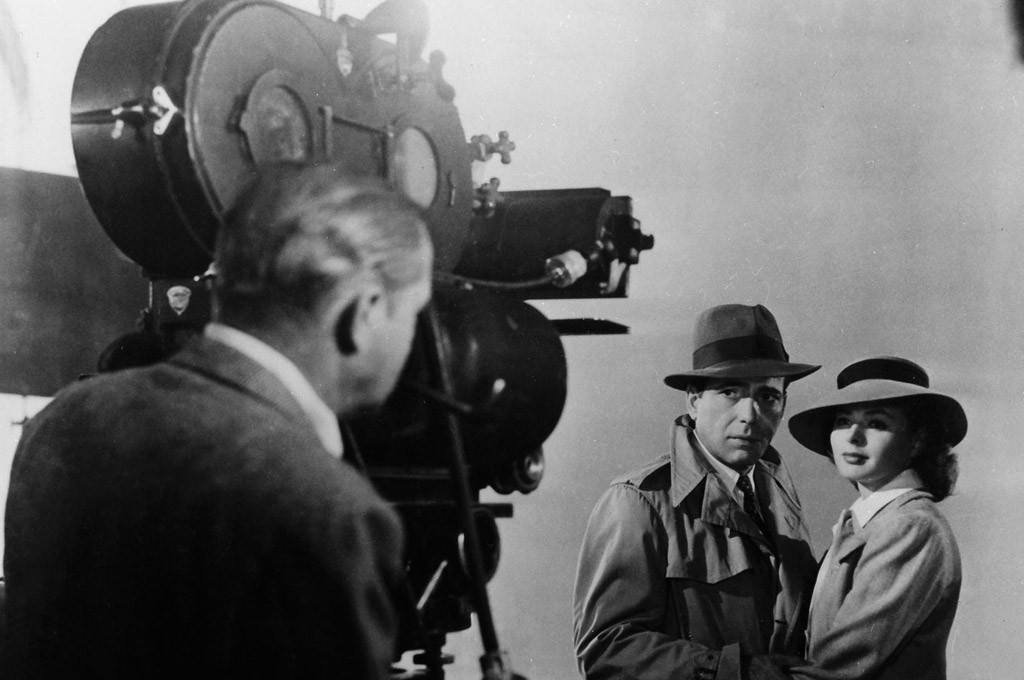Film, History and Memory January 23, 2016
Author: Beach Combing | in : Contemporary, Medieval, Modern , trackback***Dedicated to David***
In a recent reflection about the way we remember the past, this blogger made the case that after about two hundred years we cease to ‘own’ history.
‘For Beach Waterloo seems, somehow, ‘present’. Anything before that date seems, meanwhile, completely out of reach, as if the historical imagination falls down into a ravine. Intellectually we all know that Cromwell came after Richard III, but emotively they seem to belong to the same epoch and are not, in the mists, that distant from Charlemagne or Christ.’
An old friend of this blog David O, wondered though whether the ravine wasn’t more to do with how the past reaches us. His words have been going round and round in Beach’s head in the last couple of weeks.
I don’t think anything will ever become ‘history’ as long as we have moving pictures to look at. WWI is never going to be history in the same way that Queen Victoria is, even though they’re just a couple of decades apart. And Marilyn Monroe or Frank Sinatra… somehow I can’t imagine them ever falling into your ravine.
It is a fascinating question. Will celluloid rescue figures from the past so we can keep revisiting them? Will our great, great grandchildren have a kind of privileged access to Marilyn Monroe or Sinatra that we do not have for Wellington or Napoleon?
https://youtu.be/KzLEhHO21eQ
Recently watching, as you do, ‘Nude Woman by the Waterfall’ (1920), Beach felt worlds away from this quaintly bizarre erotica. He is almost tempted to say that Cromwell is closer: at least Cromwell can be understood…
Watching crowd scenes from London in the 1920s Beach realized (with a shock) that everyone there was now dead: and perhaps thankfully their hats have disappeared with them.
Maybe with early film there is the problem of technical imperfections, jerkiness, lack of a focus. Here is a ‘clean’ shot of Marilyn Monroe singing from the fabulous Some Like It Hot. Fifty years have gone by and most of the people in these shots are no longer breathing. And their clothing, their movements, their inclinations all seem hopelessly dated. If these could magically walk into a modern nightclub both sides would have a very memorable evening. Of course, to really get to grips with this question we have to imagine what it would be like for someone watching this in 2160; or better still ask ourselves what effect a film of British ‘tommies’ returning from Waterloo would have on us.
Perhaps in the end the real question is intimacy. If a source, any source, can give us intimacy about a given age then it brings us into contact with that age. The Paston Letters are way superior to everything in the videos above in terms of connecting with a time: and would very possibly be superior to a time-travelling documentary filmer who had 24 hours to catch clips of, say, soldiers marching in the Pilgrimage of Grace. But then to be intimate you have to read the Paston Letters and understand them: film clips can be absorbed in seconds and for anyone with a visual memory they will (always?) trump deeper reading in contemporary documents. In short, the medium is the message…
Other thoughts on the future of history and film: drbeachcombing At yahoo DOT com
28 Jan 2016: Ricardo: I wonder, if the question – or better, the answers provided – aren’t framed by our oral crippled culture. I venture that for those of a rich oral culture maybe long time ago is still yesterday… Or everything yesterday becomes long time ago. The point is, if you shift the importance of the medium, your historical sense will also shift. That is, off course, not an affirmative, but a working hypothesis.
Leif writes: It is interesting that David O and Dr. Beachcombing view the advent of cinema as a ‘ravine’. This writer has long thought the same of photography. In the mind’s eye, there is a confusion between photo and reality. (Years ago, in design school, the students were asked to create a represention of a simple concept. When we produced a photograph, one of our fellows objected on the grounds that a photograph was not a representation.) For us, Queen Victoria is tangible is a way that George III never will be. It’s also significant that some of the most famous historical photographs may be staged. Serious questions have been raised about Roger Fenton’s ‘Valley of the Shadow of Death’ (1855), Robert Capa’s ‘Loyalist Militiaman at the Moment of Death’ (1936), and Joe Rosenthal’s ‘Raising the Flag on Iwo Jima’ (1945). But in era of film (roughly 1840 to 2005), photographic images were relatively scarce. If the medium is the message, the meaning changes with the advent of digital photography. Among other things, an expert may not be able to tell whether a photo is digitally altered, and the proliferation of (often low quality) photos makes it difficult to make sense of any individual image. Perhaps it’s significant that we are a generation older than Dr. Beachcombing, and our ravines fixed by photography and cinema respectively. Audience expectations are an essential part of a medium, and these change over time. ‘Owning history’ is still a subjective endeavor at best.



